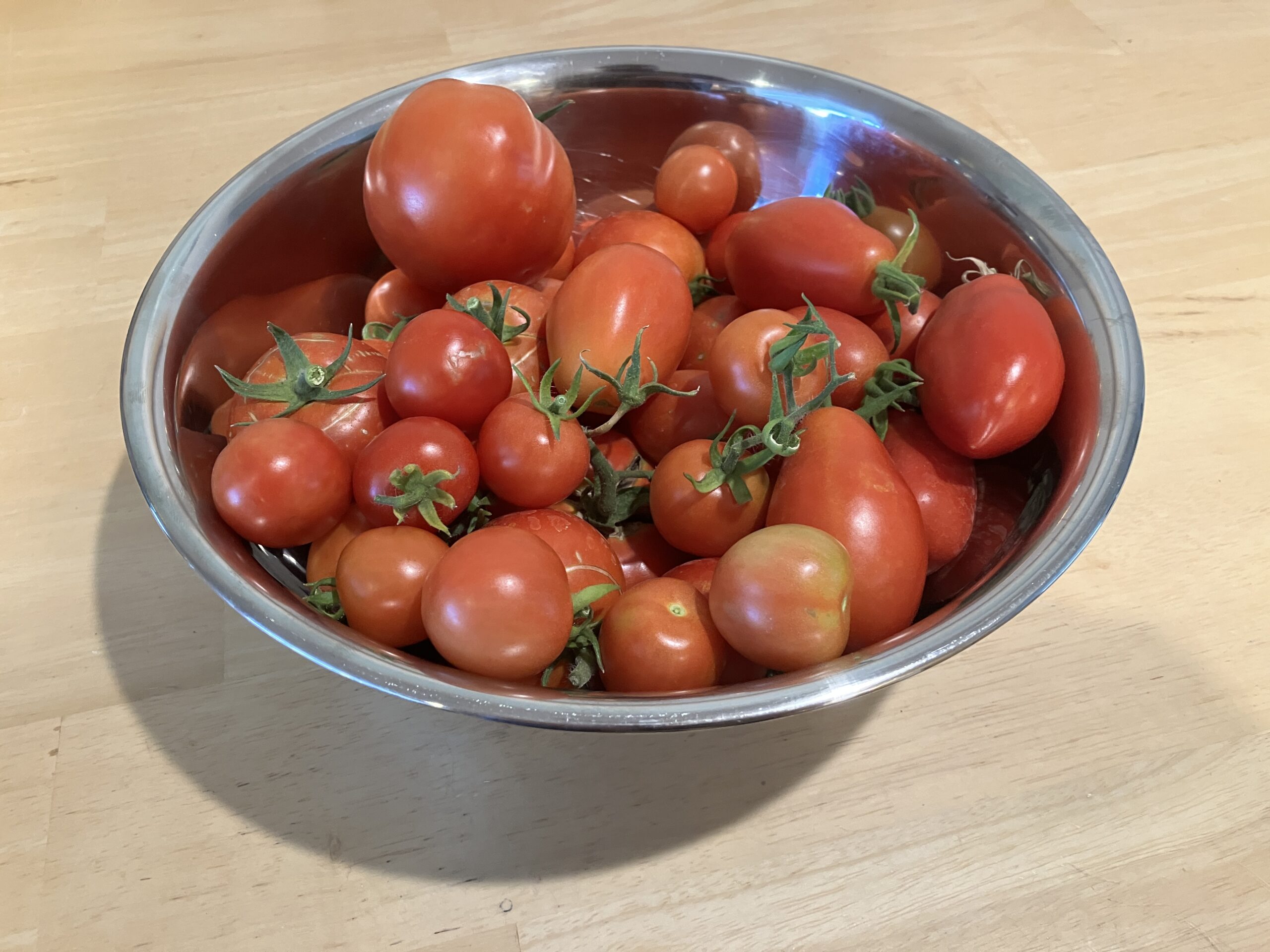9.2 Preserving Your Produce

9.2 Preserving Your Produce
Dehydration
What It Is: Removing moisture from food using controlled temperature and airflow, preventing microbial growth and enzyme activity. Process: Food is heated at low temperatures (95-165°F) while air circulates to remove moisture. Best For: Herbs, fruits, vegetables, mushrooms Equipment Needed:
- Food dehydrator or low-temperature oven
- Cutting boards and sharp knives
- Storage containers or vacuum sealer Learn More: National Center for Home Food Preservation (nchfp.uga.edu)
Water Bath Canning
What It Is: Preserving high-acid foods by heating sealed jars to a boiling temperature (212°F at sea level). Process: Foods are packed in jars, sealed, and processed in boiling water to destroy microorganisms. Best For: Fruits, jams, pickles, tomatoes, salsas Equipment Needed:
- Large pot with rack
- Jar lifter and funnel
- Mason jars and new lids Learn More: Ball Canning (freshpreserving.com)
Pressure Canning
What It Is: Preserving low-acid foods using high pressure to achieve temperatures above boiling. Process: Foods are sealed in jars and processed at 240-250°F under pressure. Best For: Vegetables, meats, beans, soups Equipment Needed:
- Pressure canner
- Canning jars and tools
- Pressure gauge Learn More: Presto Pressure Canning (gopresto.com)
Fermentation
What It Is: Using beneficial bacteria to convert food sugars into acids, creating preservation. Process: Foods are submerged in brine, allowing beneficial bacteria to create preservative acids. Best For: Cabbage, cucumbers, root vegetables Equipment Needed:
- Fermentation crocks or jars
- Weights and airlocks
- Salt and measuring tools Learn More: Wild Fermentation (wildfermentation.com)
Freezing
What It Is: Preserving food by lowering temperature below freezing to stop microbial growth. Process: Foods are prepared, packaged, and frozen quickly to maintain quality. Best For: Most fruits and vegetables, herbs, prepared dishes Equipment Needed:
- Freezer bags or containers
- Vacuum sealer (optional)
- Blanching pot Learn More: USDA Freezing Guidelines (fsis.usda.gov)
Cold Storage
What It Is: Storing produce at cool temperatures without freezing. Process: Foods are kept in controlled temperature and humidity environments. Best For: Root vegetables, apples, winter squash Equipment Needed:
- Root cellar or cool storage area
- Storage containers
- Temperature/humidity monitors Learn More: Mother Earth News (motherearthnews.com)
Salt Curing
What It Is: Using salt to draw moisture from food, preventing bacterial growth. Process: Foods are packed in salt or strong brine solutions. Best For: Vegetables, herbs, some fruits Equipment Needed:
- Curing salt
- Glass or ceramic containers
- Weights Learn More: The Art of Preserving (artofpreserving.com)
Food Safety Considerations
Basic Guidelines
- Always use tested recipes
- Maintain proper pH levels
- Follow processing times
- Use appropriate equipment
- Monitor storage conditions
Testing Services
- Pressure gauge testing
- pH testing for foods
- Lab analysis services
- Equipment calibration

